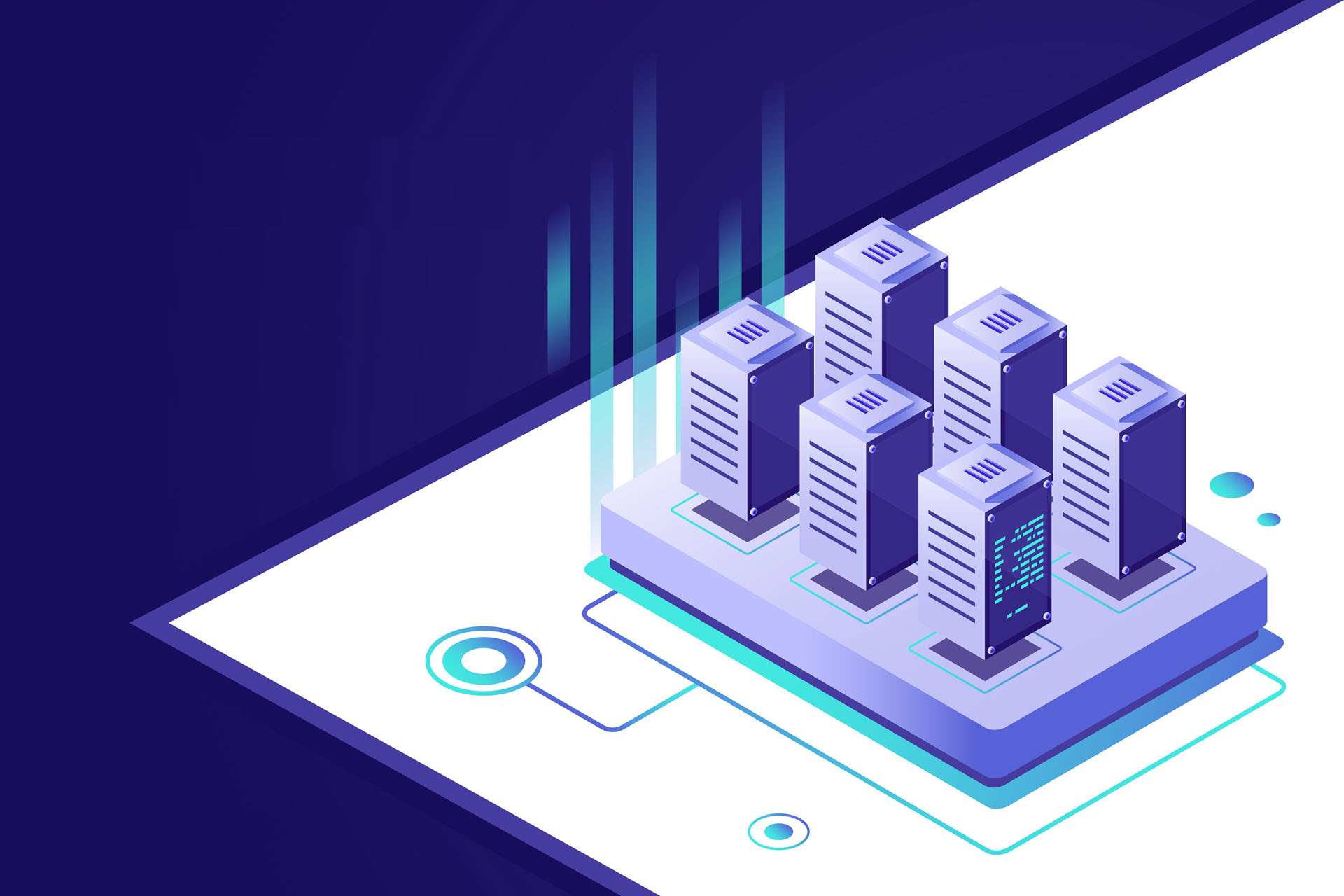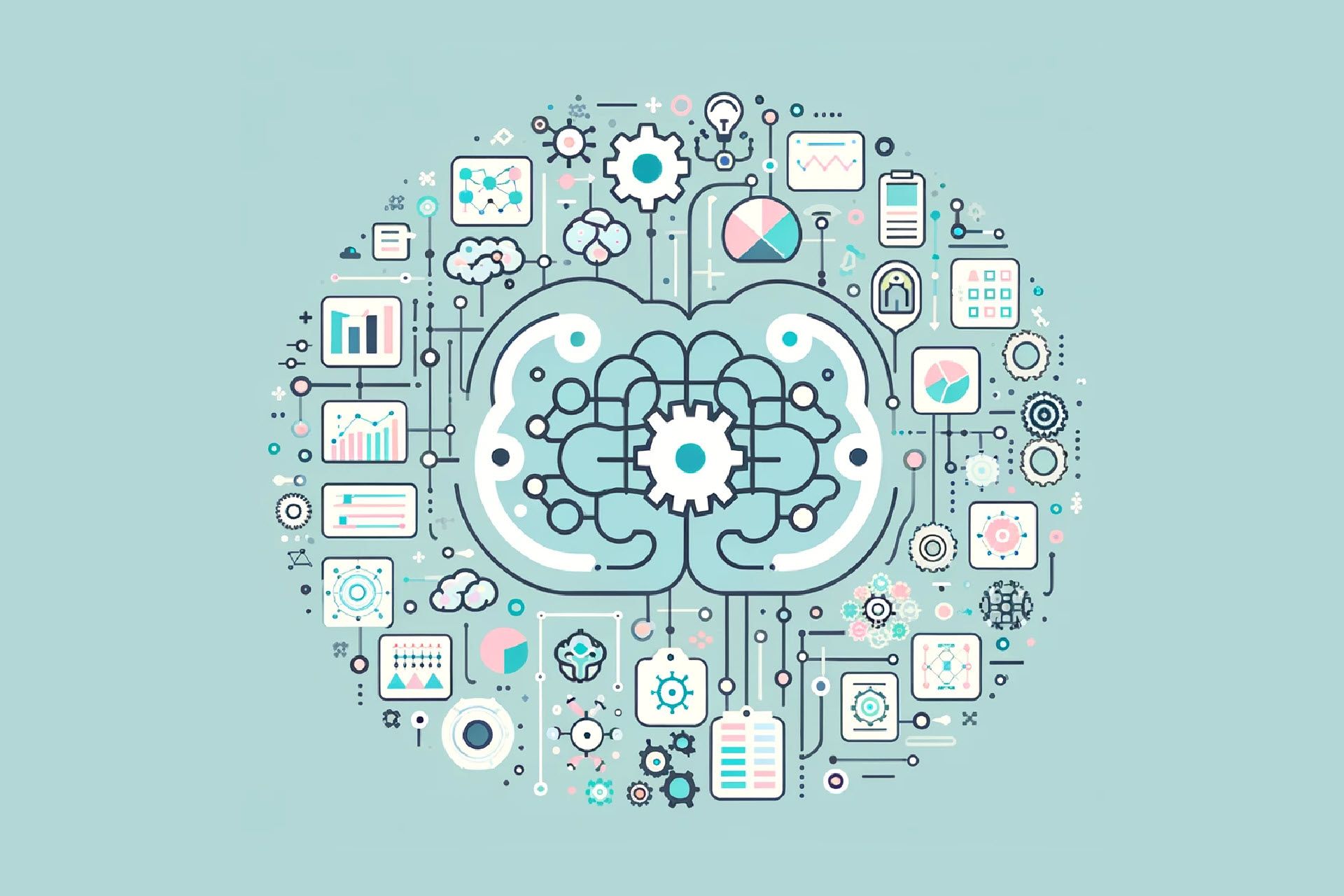High-performance computing (HPC) and Artificial Intelligence (AI) are not inherently linked, but they complement each other excellently.
The computational power and scalability of HPC clusters are critical enablers of AI-based software. On the other hand, AI allows us to more intelligently process workloads on and make full use of HPC-based infrastructure.
This article explains what the combined use of HPC and AI offers to both the enterprise and scientific computing landscape. Jump in to see whether mixing these technologies would make a worthwhile investment for your use case.
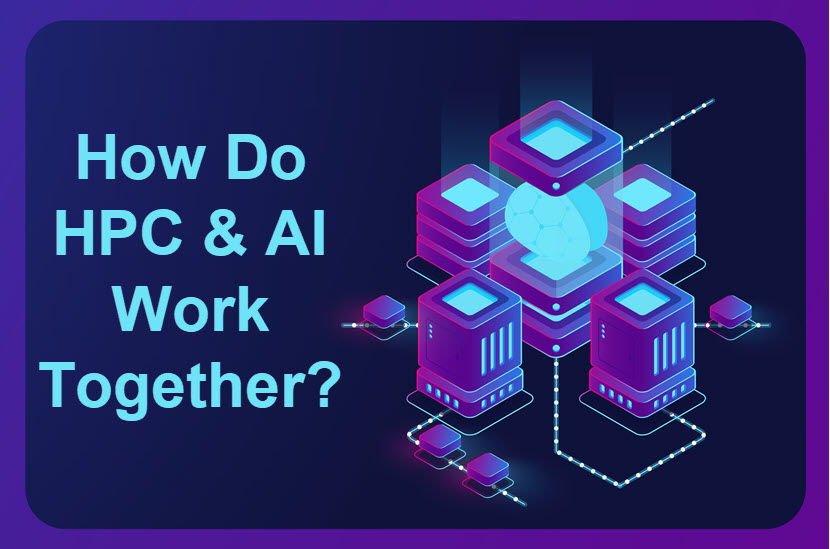
What Is High-Performance Computing (HPC)?
High-performance computing (HPC) refers to the use of computer clusters that work in parallel to solve high-volume computations. HPC systems process and analyze data at extremely high speeds, making them well-suited for tasks that involve large data sets and complex calculations.
An average HPC system has between 16 and 64 machines (so-called nodes), each running two or more CPUs. Unlike a standard computer that completes tasks on a queue-based basis, an HPC cluster relies on parallel processing to speed up operations. That way, clusters use all available resources to simultaneously perform as many tasks as possible.
Thanks to parallel processing, HPC systems perform quadrillions of calculations per second. To put it into perspective, an average 3 GHz single-core processor performs around 3 billion calculations per second.
This extreme processing speed makes HPC essential for use cases that involve:
- Big data and massive multi-dimensional data sets.
- Real-time data analytics.
- Extreme performance databases.
- Advanced machine learning and AI elements.
Every HPC cluster contains a scheduler that keeps track of available resources and ensures efficient allocation of requests across the nodes. Many HPC systems also include graphics processing units (GPUs) and field-programmable gate arrays (FPGAs) to increase processing power further.
An HPC cluster can run on-prem, at the edge, or in the cloud (or on a combination of the three options). This versatility makes HPC suitable for a wide range of use cases. Here are a few real-life use cases that perform well on an HPC infrastructure:
- Analyzing the disease progression of millions of people to detect sickness patterns.
- Running realistic car crash simulations without having to perform any physical tests.
- Analyzing millions of transactions to identify fraud tactics.
- Running realistic simulations to test designs without having to build anything physically.
- Predicting storms and other unusual weather patterns.
Our article on high-performance computing provides a detailed look at how HPC clusters are transforming the way companies do business.
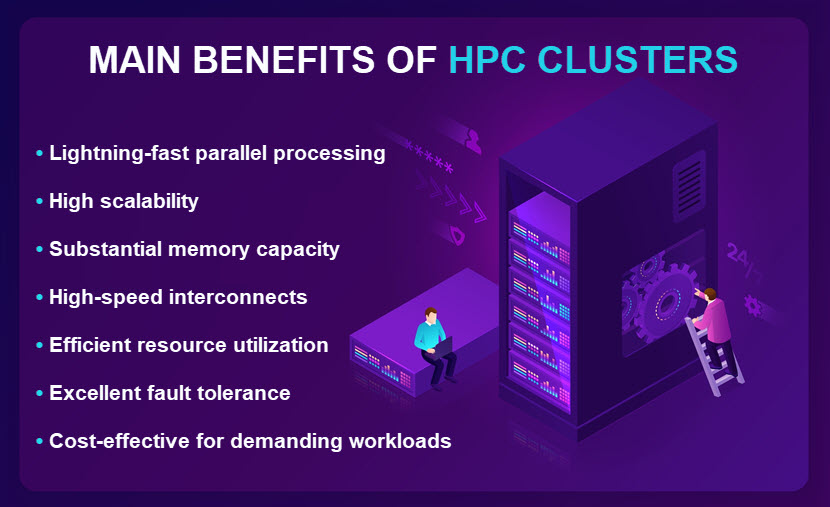
What Is Artificial Intelligence (AI)?
Artificial intelligence (AI) refers to a machine's ability to perform tasks associated with human intelligence (problem-solving, reasoning, learning, etc.). AI enables us to create devices that perform these tasks autonomously and can adapt to new situations.
AI has a wide range of applications across various industries, including:
- Healthcare use cases (disease diagnosis and prediction based on medical imaging, drug development, personalized treatment recommendations, etc.).
- Finance use cases (fraud detection and prevention, risk assessments, etc.).
- Retail and e-commerce use cases (product recommendations, inventory management, demand forecasting, chatbots, etc.).
- Transportation use cases (self-driving cars and drones, route optimization, etc.).
- Manufacturing use cases (AI-based machinery, equipment maintenance, quality control, defect detection, etc.).
- Education use cases (adaptive learning platforms, automated grading, intelligent tutoring systems, etc.).
- Entertainment use cases (content recommendations, content moderation, etc.).
- Energy and utilities use cases (energy consumption optimization, predictive maintenance for power infrastructure, etc.).
AI-based systems have varying processing power requirements, typically dictated by the three following factors:
- Task complexity.
- The size of the associated data set.
- Used AI algorithms and models.
Some AI applications run on relatively modest hardware, while other use cases require substantial computational resources. This is where high-performance computing comes in. HPC systems can handle large-scale, processing-intensive workloads, making them well-suited for AI-based software that demands substantial computational power.
How Can HPC and AI Work Together?
Here's what makes HPC systems an excellent fit for AI-based software:
- AI apps often involve complex neural networks with millions of parameters, so HPC's parallel processing is an excellent way to run such systems effectively.
- HPC systems have large storage capacities and high-speed data access. As a result, clusters enable effective handling of massive data sets, a vital factor for running AI software.
- HPC systems effectively connect a vast cross-section of data sources, clean and sanitize data, and store it in high-availability (HA) clusters. There is no better way to handle AI-level data sets cost-effectively.
- Specialized hardware of HPC clusters, such as Graphics Processing Units (GPUs) and Tensor Processing Units (TPUs), significantly accelerates AI workloads and supports the demands of machine learning and training systems.
- HPC systems have high scalability, so admins running AI workloads easily add more compute nodes, GPUs, or TPUs to handle larger data sets or complex AI models.
- Clusters have low-latency interconnects crucial for distributed AI training and inference tasks.
- HPC is an excellent choice for AI software with real-time or near-real-time processing requirements (e.g., autonomous vehicles or medical diagnostics). In this case, HPC clusters provide the necessary performance levels that meet even the stringent latency requirements.
Let's examine several use cases and areas that present an excellent opportunity to combine HPC and AI.
Have a project that warrants the use of high-performance computing? No matter how compute-intensive your workloads are, pNAP's HPC servers will provide enough resources to run your use case effectively.
Predictive Analytics
Predictive analytics is an excellent use case for the integration of HPC and AI:
- HPC provides the necessary computational power and scalability to handle large data sets.
- AI techniques enhance accuracy and enable real-time predictions.
HPC hardware also accelerates the training of AI models that perform predictions. Faster AI training enables data scientists to experiment with more sophisticated algorithms in less time.
A mix of HPC and AI in predictive analytics is a welcome addition to various industries (finance, healthcare, energy, supply chain management, cybersecurity, etc.).
Physics-Informed Neural Networks
Physics-Informed Neural Networks (PINNs) use AI to discover insights in fields like fluid dynamics, material science, and climate modeling.
PINNs help us understand and predict how things work in the real world, even when all we have is incomplete or noisy data. Here are a few examples of tests scientists run on a PINN:
- Simulate and predict fluid flow behavior (e.g., water flow in rivers, heat transfer in cooling systems, etc.).
- Analyze the stress and strain within structures.
- Simulate electromagnetic fields.
- Predict material behavior under various conditions.
- Simulate and predict environmental processes (e.g., groundwater flow, pollutant dispersion, ecosystem behavior, etc.).
- Analyze the mechanics of biological systems, such as the movement of muscles and joints.
- Predict reaction kinetics and chemical processes.
PINNs are a promising use case for the integration of HPC and AI. Here's why:
- HPC clusters are an excellent fit for the extreme computational demands of a PINN.
- Training AI models in PINNs is computationally intensive. HPC clusters with powerful GPUs or TPUs significantly accelerate the training process.
- Distributing computations across multiple nodes in an HPC cluster speeds up PINN simulations.
- The use of HPC and AI also paves the way for real-time PINN apps, such as control systems or real-time monitoring of physical processes. In those cases, HPC provides resources that AI software requires for real-time decision-making.
As an extra benefit, using HPC to build a PINN reduces the need for costly physical experiments. Researchers get to simulate and analyze complex systems in a virtual environment, which is far more cost-effective than running traditional hardware.
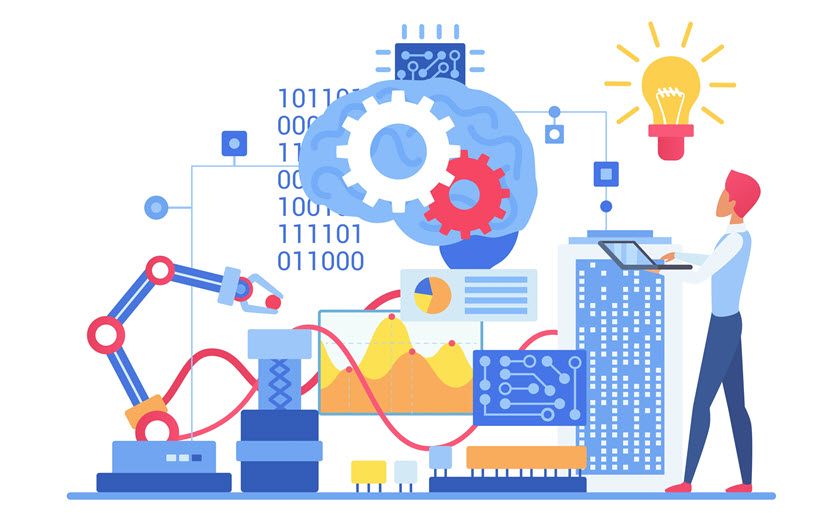
Drug Discovery and Molecular Modeling
HPC and AI promise to be a game-changer in drug discovery and molecular modeling:
- HPC provides the computational horsepower required to simulate and analyze complex molecular interactions.
- Deep learning and AI-based molecular dynamics simulations accelerate the identification of drug candidates and elucidate interactions with biological targets.
The synergy between HPC and AI will be vital in discovering new drugs and treatments for various diseases. Researchers get to screen vast chemical libraries, predict drug binding affinities, and optimize drug candidates far more efficiently than with any legacy system.
Climate Modeling
Climate modeling requires researchers to simulate the Earth's climate to achieve several tasks:
- Understand climate behavior.
- Predict climate trends.
- Assess the impacts of climate change.
HPC clusters are highly effective at running complex climate models that must account for various physical, chemical, and geological factors. On the other hand, AI can analyze vast climate data sets, identify insightful patterns, and make accurate climate-related predictions.
Various Autonomous Systems
Autonomous systems (self-driving cars, drones, robots, etc.) rely on AI for decision-making, perception, and control. Here's why adding HPC to this mix is a sensible choice:
- Autonomous systems require real-time decision-making to navigate and interact with their environment. HPC provides the computational power required for low-latency responses.
- Autonomous systems rely on various sensors (e.g., cameras, LiDAR, radar, GPS, etc.) to perceive their surroundings. Combining AI with HPC helps effectively fuse data from multiple sensors.
- Deep learning algorithms within autonomous systems recognize objects, plan routes, and make real-time decisions. HPC clusters with GPUs or TPUs are essential for the efficiency of these operations.
- HPC infrastructure can effectively run safety-critical algorithms for redundancy and fail-safe mechanisms in autonomous systems.
- HPC systems are an excellent fit for any use case that involves multiple autonomous agents (e.g., convoys or swarm robotics).
Similar to other use cases, utilizing HPC to host software for autonomous systems presents various cost-saving opportunities.
Looking for ways to lower your IT expenses? Check out our article on the most effective IT cost reduction strategies and see how companies ensure their expenses never spiral out of control.
How Can HPC Help AI Development?
High-performance computing will continue to be a significant enabler of AI advancements for the foreseeable future. Here are the main ways in which HPC will contribute to AI development in the coming years:
- Faster training of large AI models: Advanced deep learning models require extensive computational resources for training. HPC clusters with powerful GPUs and efficient interconnects will accelerate the training of these models, reducing the time required to experiment with and develop AI solutions.
- Handling of big data sets: HPC levels of capacity and bandwidth enable an AI system to store and process massive data sets. Going forward, HPC will enable AI practitioners to work with even more extensive and diverse data sources.
- Scalability: HPC systems are highly scalable, which enables clusters to adapt to increasing AI processing demands. As AI projects grow in complexity and scale, HPC will be essential in accommodating larger workloads.
- AI innovation: HPC clusters provide a cost-effective and lightning-fast platform for researchers to explore new AI algorithms and architectures. Expect HPC to play a vital role in experimenting with cutting-edge AI ideas.
- Real-time AI use cases: As discussed earlier, HPC will be a critical factor in domains where real-time or low-latency AI processing is crucial (autonomous vehicles, robotics, healthcare, etc.).
The overall cost-effectiveness of HPC (especially when deployed in the cloud) will also play a massive role in AI development. Organizations with somewhat limited budgets will get to run advanced AI projects, which will be vital for the growth of this technology.
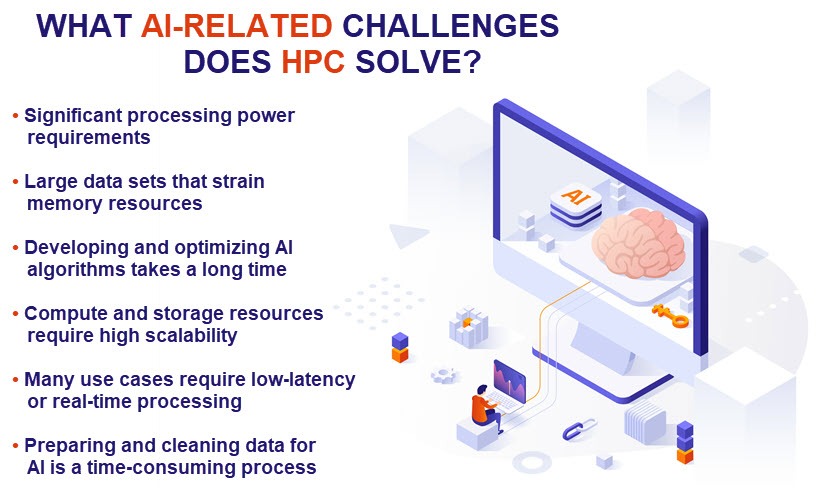
HPC and AI: Overcoming the Challenges
While the combination of HPC and AI offers significant benefits, there are several challenges to using the two technologies together. Here are the biggest issues that come with using HPC to run AI-based software:
- High on-prem costs: HPC clusters with GPUs and advanced networking equipment are expensive to acquire and maintain. Achieving a worthwhile ROI can be challenging when deploying an HPC system in-house.
- Management complexity: Managing an HPC system is complex even without dealing with AI workloads. Organizations often require specialists to configure, maintain, and optimize HPC clusters for AI workloads.
- Optimizing scalability: HPC clusters are highly scalable, but optimizing the scaling process to accommodate AI workloads is challenging to without suffering performance drops.
- Power consumption: Large-scale HPC systems consume significant amounts of energy no matter what you run on them. Energy-efficient hardware and cooling are essential to minimize environmental impact and lower operating costs.
- Data movement issues: Moving large volumes of data between storage and nodes in a cluster often creates bottlenecks. AI workloads that require frequent data access must run on an HPC system with high-speed interconnects and an efficient data management strategy.
- Staff availability: There's currently a shortage of skilled professionals who know how to harness the capabilities of both HPC and AI effectively.
- Software integrations: Integrating AI software frameworks with HPC environments requires careful consideration of software stacks and dependencies. Otherwise, the adopter risks compatibility and performance issues.
The two biggest HPC challenges (high setup cost and complex day-to-day maintenance) are not a factor if you deploy an HPC system in the cloud. Our article on the advantages and disadvantages of cloud computing helps evaluate whether the cloud approach aligns well with your use case.
HPC and AI: A Tech Match Made in Heaven
HPC supports advanced AI models and algorithms far better than any legacy system. Meanwhile, AI enables us to process workloads better and maximize the resource usage of an HPC system. The two technologies complement each other exceptionally, so expect more corporate and scientific use cases to turn toward the combined use of HPC and AI in the coming years. Discover other HPC applications and learn about recent HPC-powered technological advances, or learn more about HPC architecture and the differences in HPC systems based on their application.
